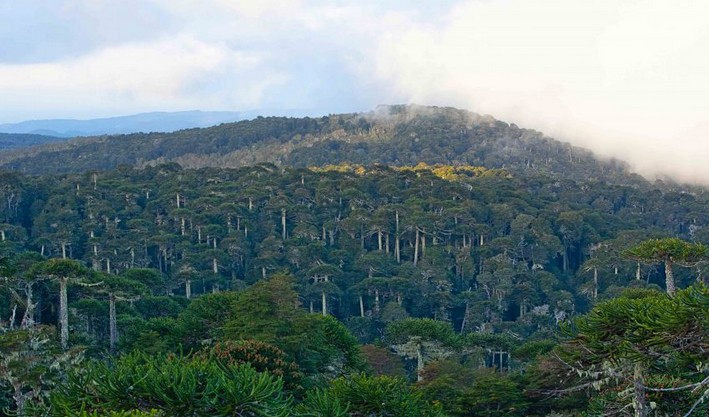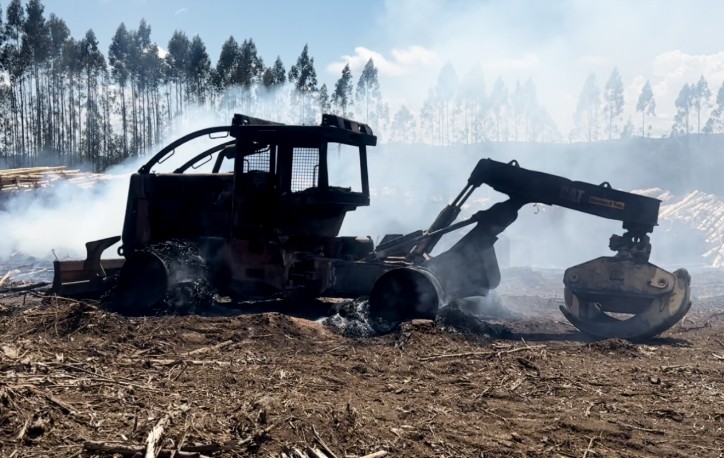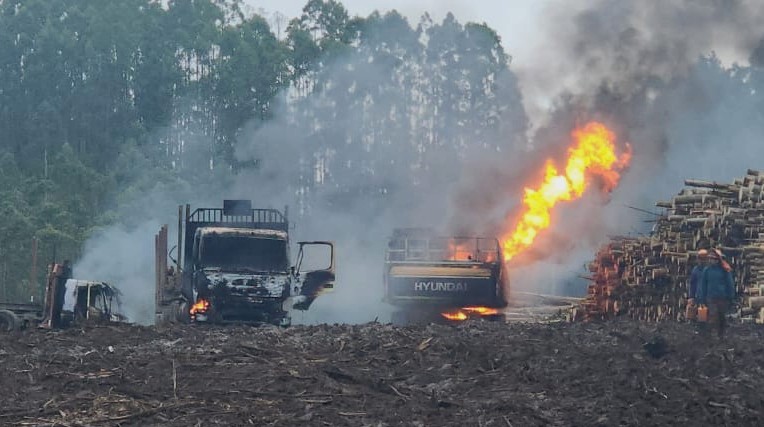"Nearly 17% of Araucaria Trees in Chile Are Located in Biobío": Forestry Sciences Expert
The recent controversy surrounding a road project in La Araucanía has once again brought into the national spotlight one of the oldest and most sacred natural emblems of southern Chile: the Araucaria Araucana.
The initial authorization to cut down 96 specimens, as part of the works on the Icalma-Melipeuco and Liucura-Icalma routes, sparked widespread rejection, especially from Indigenous communities and academic sectors, ultimately leading the government to rule out any intervention on these ancient trees.
"We rule out any kind of disturbance to the araucarias. That will not happen—they will not be cut down, transplanted, or interfered with in any way," assured Patricio Poza, the Regional Minister of Public Works for La Araucanía, in an attempt to calm tensions after the leak of Resolutions 594 and 595 issued by the National Forestry Corporation (Conaf), which had authorized the logging.
Although the epicenter of the conflict lies in the La Araucanía Region, in the Biobío Region—particularly in areas like Alto Biobío, the Nahuelbuta Mountain Range, and some coastal zones such as Santa Juana and Nacimiento—the situation has raised alarms about the conservation status of this species at the regional level.
A Spiritual and Ecological Symbol
For the Mapuche-Pehuenche communities, the araucaria, or pewen, is more than just a tree: it is a pillar of cultural identity. "As the pewenche territory of Lonquimay, we do not accept the felling of the pewen, which has been our spiritual, nutritional, cultural, and economic sustenance from our ancestors to the present day. We consider this resolution a violent affront to our spirituality and our Mapuche people," they stated in a communiqué.
This spiritual dimension coexists with its ecological and scientific value. Rodrigo Hasbún Zaror, an academic from the Faculty of Forestry Sciences at the University of Concepción, explains that Araucaria araucana "is one of the oldest conifers in the world, endemic to Chile and Argentina, and can live for over a thousand years. Its seed, the piñón, holds immense ecological and cultural value. Nearly 17% of the araucarias present in Chile are located in the Biobío Region."
Additionally, the academic notes that the species is classified as "Endangered" by the International Union for Conservation of Nature (IUCN), which obliges authorities to take extreme precautions.
Biobío: The Northern Limit of the Pewen
Although much attention has focused on the southern Andean forests, Biobío is not exempt from the reality of the araucaria. Cristian Echeverría, director of the Campus Nature Project at the University of Concepción, warns that threats vary depending on the area: "On the coast, its risk of extinction is higher than in the Andes, due to urban expansion, deforestation, and habitat loss. In many cases, these coastal populations are not protected within the national system of wild areas."
Echeverría emphasizes that in Biobío, populations are found both in the Andes Mountain Range, such as Alto Biobío, and in coastal areas where their presence is scarcer and more vulnerable. "The Biobío Region represents the northern limit of this species' distribution in Chile," he states.
"In Chile, Araucarias extend as far as Laja Park, so the population of this specimen in the Biobío Region is quite limited," he added.
Preserving the Irreplaceable
Dr. Ángela Bustos, an expert in forest ecosystems, shares a striking fact: an araucaria can take over a millennium to reach full maturity. "It grows between 1 to 1.8 centimeters per year. It’s even slower than the alerce. That’s why its conservation and restoration cannot be an option—they must be a priority."
Bustos also highlights its fire resistance, a characteristic that has allowed it to persist in the Andean landscape for centuries. "This resistance has favored its natural regeneration, but simply letting it survive is not enough—we must actively protect its habitat."
Source: Diario Concepción









